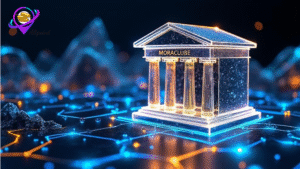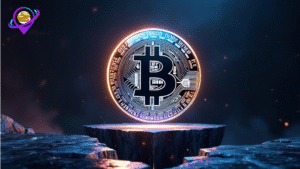The world of blockchain technology has witnessed significant growth in recent years, introducing various innovations and applications. One such innovation that has gained immense popularity is Non-Fungible Tokens (NFTs). NFTs have revolutionized the digital art, collectibles, and gaming industries by providing a unique way to represent and trade digital assets. However, as the NFT ecosystem continues to expand, the need for interoperability between different platforms and standards has become crucial. In this article, we will explore the role of NFT standards in achieving interoperability and the benefits it brings to the NFT community.
Understanding NFTs
Before delving into the role of NFT standards in achieving interoperability, it’s essential to understand what NFTs are. NFTs are unique digital assets that are indivisible and cannot be exchanged on a one-to-one basis. Unlike cryptocurrencies such as Bitcoin or Ethereum, which are fungible and interchangeable, NFTs represent ownership or proof of authenticity of a specific digital item, whether it be artwork, music, virtual real estate, or in-game items.
The Need for Interoperability
As the NFT market expands, numerous platforms and marketplaces have emerged, each with its own set of standards and protocols. However, these platforms often operate in silos, limiting the transferability and utility of NFTs. Interoperability is the ability of NFTs to seamlessly move across different blockchains and platforms, enabling users to trade and utilize their assets regardless of the platform they are on.
NFT Standards and Their Importance
NFT standards play a crucial role in the world of Non-Fungible Tokens (NFTs) by defining a set of rules and protocols that ensure compatibility and uniformity across different platforms and blockchains. These standards are of significant importance for several reasons.
Firstly, NFT standards provide a common framework that developers, artists, and users can adhere to when creating, owning, and transferring NFTs. By following these standards, creators can ensure that their NFTs are compatible with various platforms and can be easily traded or interacted with by users.
Secondly, NFT standards enable marketplaces and exchanges to list and support a wide range of NFTs, regardless of their origin or underlying blockchain. This enhances liquidity in the NFT market and allows for a broader pool of buyers and sellers to participate, increasing the overall value and utility of NFTs.
Moreover, standards such as ERC-721 and ERC-1155 have paved the way for the NFT revolution by introducing concepts like unique identifiers and the ability to create both fungible and non-fungible tokens within the same contract. These standards have been widely adopted, driving innovation and opening up new possibilities for artists, collectors, and developers in the NFT space.
NFT standards define a set of rules and protocols that ensure compatibility and uniformity across different platforms. These standards facilitate the creation, ownership, and transfer of NFTs by providing a common framework for developers, artists, and users. Let’s explore some of the most prominent NFT standards and their significance:
ERC-721
ERC-721 is one of the earliest and widely adopted NFT standards on the Ethereum blockchain. It introduced the concept of unique tokens by assigning a distinct identifier to each NFT. This standard revolutionized the digital art market, allowing artists to tokenize and sell their creations directly to collectors. ERC-721 laid the foundation for subsequent NFT standards and paved the way for the NFT revolution we witness today.
ERC-1155
ERC-1155 is a more recent NFT standard that offers a hybrid approach, allowing the creation of both fungible and non-fungible tokens within the same contract. This standard provides more flexibility and efficiency by reducing the gas fees associated with minting and transferring NFTs. With ERC-1155, developers can create multi-token contracts that support various assets, enhancing the composability of NFTs.
Other NFT Standards
Apart from ERC-721 and ERC-1155, several other NFT standards have emerged, each with its own unique features and use cases. Some notable examples include Binance Smart Chain’s BEP-721 and BEP-1155 standards, Flow’s Fungible Token and Non-Fungible Token standards, and Polygon’s Matic ERC-721 and ERC-1155 standards. These diverse standards contribute to the growth and interoperability of the NFT ecosystem.

Achieving Interoperability through NFT Standards
NFT standards play a vital role in achieving interoperability within the NFT ecosystem. Here are three key ways in which NFT standards enable interoperability:
Cross-Chain Compatibility
NFT standards that are compatible across different blockchains enable seamless cross-chain transfers of NFTs. This allows users to trade and interact with NFTs on various platforms without being limited to a single blockchain. Standards like Polkadot’s Substrate framework and Cosmos’ Inter-Blockchain Communication (IBC) protocol facilitate interoperability by bridging different chains and enabling the transfer of assets.
Inter-NFT Communication
NFT standards with built-in communication protocols enable NFTs to interact and exchange data with one another. This opens up possibilities for unique use cases such as NFT collaborations, cross-game interactions, and interoperable virtual worlds. Protocols like Chainlink’s decentralized oracle network provide the infrastructure for NFTs to communicate and trigger events based on real-world data.
Enhanced Liquidity
By adhering to common NFT standards, marketplaces and exchanges can list and trade NFTs from different platforms more easily. This creates a broader pool of buyers and sellers, increasing liquidity and market efficiency. Standards such as the Ethereum Name Service (ENS) allow NFT owners to attach human-readable names to their tokens, simplifying the discovery and trading process.
Challenges in Implementing NFT Standards
While NFT standards bring numerous benefits to the ecosystem, their implementation is not without challenges. Some of the key challenges include:
Scalability
As the popularity of NFTs grows, scalability becomes a significant concern. Blockchains need to handle a large number of transactions and ensure quick confirmation times without compromising security. Layer-2 solutions like Ethereum’s Optimistic Rollups and Polygon’s sidechains aim to address scalability issues by offloading transactions from the main chain.
Security and Privacy
The secure storage and transfer of NFTs are crucial to maintaining their value and integrity. Smart contract vulnerabilities, hacks, and privacy concerns can undermine user trust in the ecosystem. Ongoing research and development efforts focus on improving security measures, auditing smart contracts, and implementing privacy-preserving technologies like zero-knowledge proofs.
Governance and Consensus
Standardization requires consensus among various stakeholders in the NFT ecosystem. The governance models of different platforms and standards should be transparent, inclusive, and adaptable to evolving needs. Achieving consensus on upgrades, improvements, and cross-chain collaborations requires active participation from developers, artists, collectors, and community members.
Future Outlook for NFT Interoperability
The future of NFT interoperability looks promising as more platforms adopt and contribute to open standards. Collaborative efforts, such as the NFT Standards Working Group, aim to establish best practices and guidelines for creating interoperable NFTs. Additionally, advancements in blockchain technology, such as sharding and cross-chain protocols, will further enhance the seamless transferability of NFTs.
- Increased adoption of open standards: As the NFT ecosystem continues to expand, more platforms and projects will adopt open standards to ensure interoperability and compatibility across different networks and blockchains.
- Collaborative efforts and industry initiatives: Various industry initiatives, like the NFT Standards Working Group, will focus on establishing best practices, guidelines, and interoperability standards to facilitate seamless NFT transfers and interactions.
- Advancements in cross-chain protocols: Cross-chain protocols, such as Polkadot’s Substrate framework and Cosmos’ Inter-Blockchain Communication (IBC) protocol, will continue to evolve and improve, enabling NFTs to move across different blockchains more efficiently and securely.
- Integration with layer-2 scaling solutions: NFT interoperability will benefit from the integration of layer-2 scaling solutions, like Ethereum’s Optimistic Rollups and Polygon’s sidechains, to address scalability challenges and reduce transaction costs.
- Inter-NFT communication and collaborations: NFT standards will incorporate features that enable NFTs to interact and communicate with each other, fostering collaborations between different NFTs, cross-game interactions, and interoperable virtual worlds.
- Enhanced developer tools and infrastructure: The NFT developer ecosystem will witness the development of improved tools, libraries, and infrastructure that simplify the creation, deployment, and management of interoperable NFTs across various platforms.
- Continued community participation and governance: The involvement of developers, artists, collectors, and community members will be crucial in shaping the future of NFT interoperability, ensuring transparent governance models and consensus-building for upgrades and cross-chain collaborations.
- Technological advancements: Ongoing advancements in blockchain technology, including sharding, improved consensus mechanisms, and privacy-preserving techniques, will contribute to the seamless transferability and increased interoperability of NFTs.
Overall, the future outlook for NFT interoperability is promising, with collaborative efforts, technological advancements, and the adoption of open standards driving a more interconnected and vibrant NFT ecosystem.
Conclusion
NFT standards play a pivotal role in achieving interoperability within the rapidly expanding NFT ecosystem. By defining common rules and protocols, these standards enable cross-chain compatibility, inter-NFT communication, and enhanced liquidity. However, challenges such as scalability, security, and governance must be addressed to ensure the sustainable growth of NFT interoperability. As the NFT landscape continues to evolve, the adoption of open standards will pave the way for a more interconnected and vibrant NFT economy.
FAQs
- What are NFTs? NFTs are unique digital assets that represent ownership or proof of authenticity of a specific item, such as artwork, music, or in-game items.
- Why is interoperability important for NFTs? Interoperability allows NFTs to seamlessly move across different platforms and blockchains, increasing their utility and transferability.
- What are some popular NFT standards? Some popular NFT standards include ERC-721, ERC-1155, BEP-721, BEP-1155, and Flow’s Fungible Token and Non-Fungible Token standards.
- How do NFT standards enhance liquidity? NFT standards enable marketplaces and exchanges to list and trade NFTs from different platforms, creating a broader pool of buyers and sellers.
- What are the challenges in implementing NFT standards? Challenges include scalability, security, and governance, which require ongoing research and collaboration among stakeholders.






